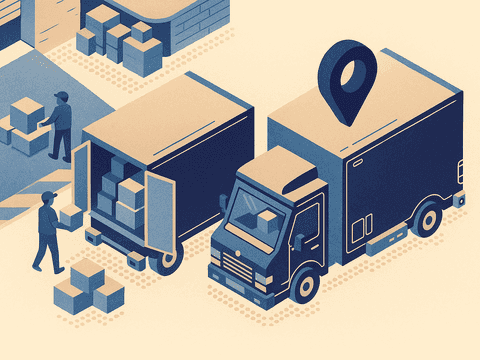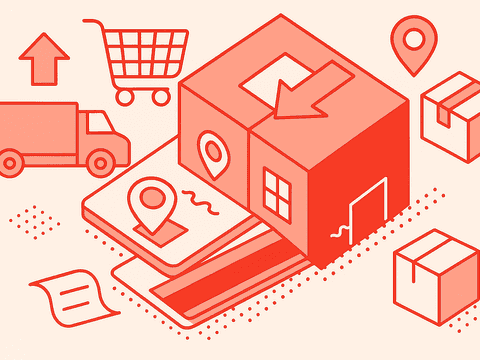TL, DR
- Use returns to upsell: Show higher-priced alternatives when customers initiate a return and let them pay the difference instantly
- Cut support tickets with automation: Set clear rules for returns, auto-generate labels, and guide customers with step-by-step instructions so your team doesn’t waste time answering repetitive questions
- Make your portal feel like your store: Customize the return page with your logo, colors, and tone to build trust and reduce drop-off during the process
- Outvio converts refunds into revenue: Let customers switch products, upgrade, and pay the difference directly in the return portal
If you’re running an online store, returns are part of the game. This list breaks down the best return portals for 2025—what they offer, how they work, and why they matter.
What is a self-service return portal
A return portal is an online page or system where customers can request and manage returns or exchanges for the items they've purchased—without needing to contact customer support.
It's usually branded to match the store and allows users to:
- Select the item they want to return or exchange
- Choose a reason for the return
- Get a return label or instructions
- Track the return process
Why leading brands are integrating return portals
Retail returns are becoming a bigger problem every year.
In 2024, U.S. retailers dealt with $890 billion in returns—about 17% of all merchandise sold. That’s a big jump from $743 billion in 2023.
This rising trend shows how important it is to have a better system for handling returns
A return portal lets your customer start a return in seconds, track its status in real time, and skip the back-and-forth emails.
For your business, the benefits are just as powerful.
Automating your return process saves time, cuts down on support costs, and gives you real data on why items are coming back. With that insight, you can fix recurring issues, improve product quality, and ultimately sell smarter.
Plus, with built-in fraud detection, you’ll reduce losses from abusive return claims and protect your bottom line.
With returns rising every year, the real win is using them to drive new sales. A smart return portal turns lost revenue into repeat purchases by offering store credit, exchanges, and product suggestions at the right moment.
How to choose the right return portal: Key features to look for
Not all return portals are the same. The right one can improve your efficiency and keep more revenue in your pocket.
These are the must-have features:
- Smart automation: Set rules for who gets free returns, which items are excluded, how refunds work, and what happens in each case.
- Custom branding: The portal should match your store’s look and feel—logo, colors, and tone—to keep the experience consistent.
- International support: If you sell globally, make sure the portal supports local languages, currencies, and return rules.
- Exchange and credit options: Let customers swap items, upgrade products, or choose store credit instead of a refund.
- Label generation and carrier integration: Make it easy to generate prepaid return labels and connect with your preferred shipping carriers.
- Return analytics: Track return reasons, identify frequently returned products, and see how returns affect your revenue.
- Instant product switch with payment (only with Outvio): Outvio lets customers change products during the return, even pay the difference instantly—without leaving the portal. It turns returns into conversions.
Best return portals for eCommerce in 2025
1. Outvio
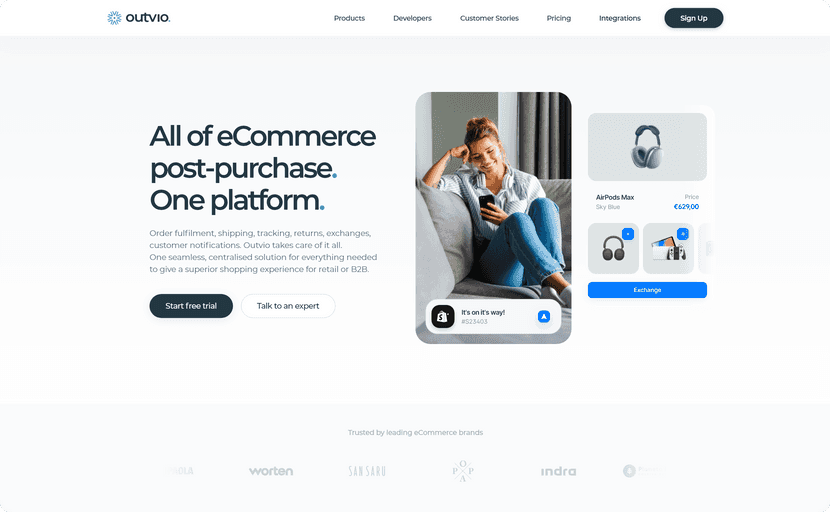
Outvio is more than just a tool for managing returns—it’s built to turn returns into new sales. It’s the only return portal that lets customers exchange products and pay any price difference instantly, right inside the return flow. No redirects, no friction—just more revenue.
You can fully customize the portal to match your brand, connect your help desk and chatbot to automate complex return scenarios, and even manage global returns thanks to integrations with international carriers.
Outvio gives you everything you need to make returns easy for your customers—and profitable for your business.
Key features:
- Instant payments during exchanges to drive upsells effortlessly
- Full branding customization: logo, colors, messaging, banners
- Multilingual and multicurrency support for international stores
- Advanced analytics on return reasons, product issues, and customer behavior
- Help desk and chatbot integration to automate support inside the return flow
- International carrier integrations for seamless global returns
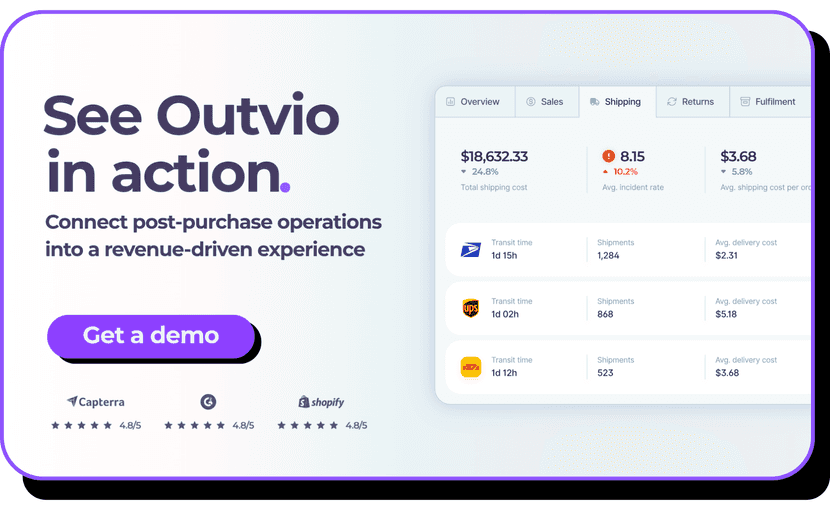
2. Loop Returns
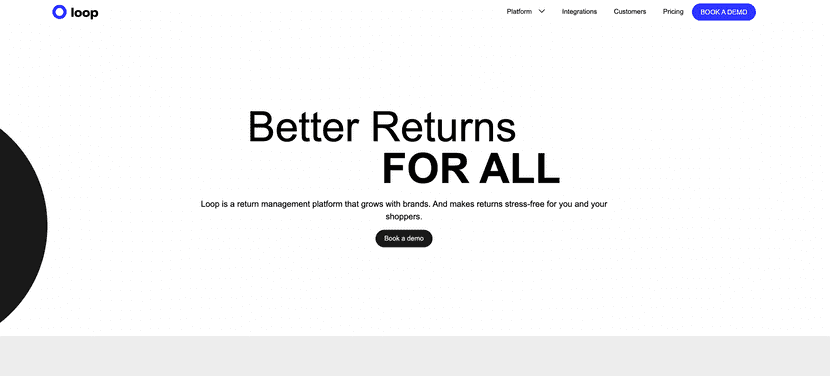
Loop Returns provides a return portal that allows customers to choose how they want to resolve a return—whether through a refund, exchange, or store credit.
The process is simple and branded, offering a familiar experience for end users with basic reporting tools for merchants.
Key features
- Branded self-service return portal
- Refund, exchange, and store credit options
- Return status tracking
- Basic dashboard for return metrics
3. ReturnGO
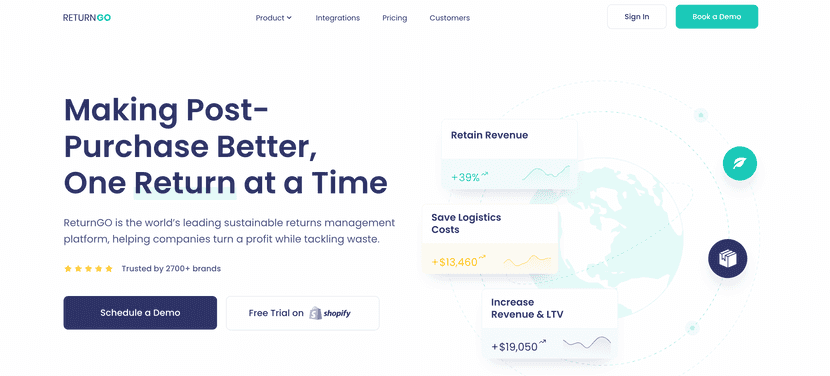
ReturnGO offers an automated return management system with a customizable portal. Customers can initiate returns, select item conditions, and receive available options based on pre-set return policies defined by the business.
Key features
- Self-service portal with return reason input
- Supports refunds, store credit, and exchanges
- Visual rule builder for return logic
- Basic reporting dashboard
4. Narvar

Narvar includes a return portal as part of its broader post-purchase suite. Customers can request a return, generate shipping labels, and track return status. The system is built to standardize communication and streamline backend operations.
Key features:
- Branded portal with step-by-step returns
- Label generation and tracking
- Return reason categorization
- System integration with logistics and ERP tools
5. ParcelLab

ParcelLab’s return portal enables guided return submissions and provides brands with tools to forecast return volume and plan operational resources. It combines return flow management with backend analytics and warehouse support.
Key features:
- Customer-facing return submission portal
- Real-time status updates
- Return volume forecasting
- Analytics on product returns and trends
6. Sorted
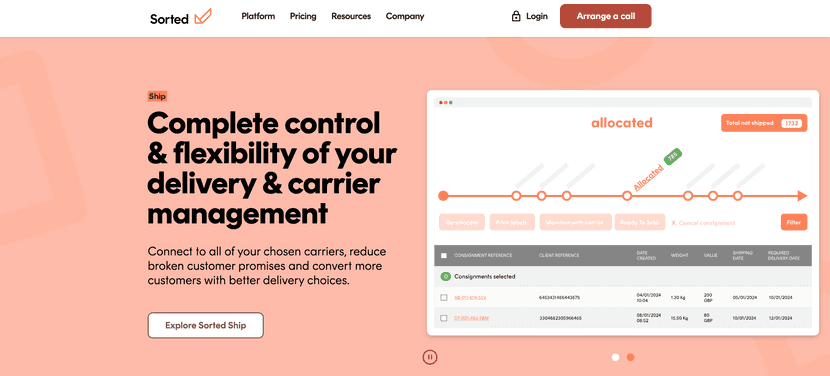
Sorted focuses on improving the logistics and speed of returns. Its return portal simplifies label creation and return instructions while giving merchants better visibility into the return journey across carrier networks.
Key features:
- Self-service return portal with label options
- Customer notifications and tracking
- Operational efficiency metrics
7. Sendcloud

Sendcloud provides a simple return portal for merchants who want more control over what gets returned and how.
Customers can submit requests, and merchants have the option to approve returns manually. Supports EU carriers and multilingual environments.
Key features:
- Manual or automatic return request approval
- Multilingual branded return portal
- Optional return label generation
- Configurable return conditions and rules
8. Happy Returns

Happy Returns offers a return portal designed to simplify the post-purchase experience for both merchants and customers, with a strong focus on sustainability and in-person drop-off options.
Key features:
- Box-free, printer-free return drop-offs at 10,000+ locations in the U.S.
- Instant or rules-based return approvals
- Aggregated returns to lower shipping costs
- Customizable return reasons and workflows
9. Aftership Returns
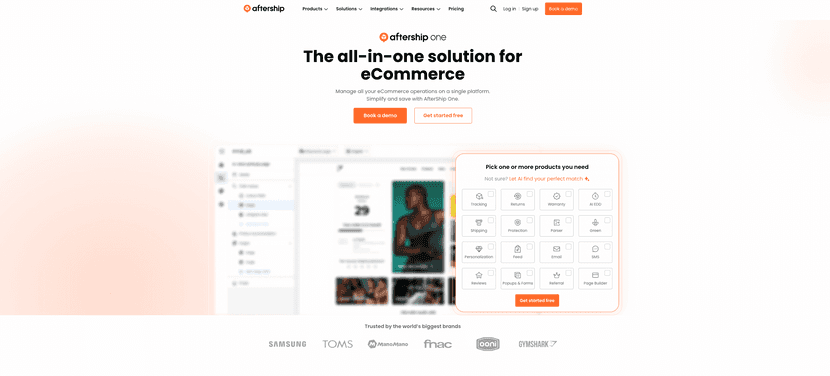
Aftership is ideal for eCommerce brands that want to reduce support workload while offering customers a smooth, self-service return experience.
Key features:
- Fully branded return portal that matches your store
- Set custom rules for auto-approvals or manual reviews
- Generate prepaid return labels from top carriers
- View return insights to optimize products and policies
How to use a branded returns portal to increase revenue: A Case Study
Popa, a Mediterranean fashion brand, proved that the right return portal can transform the returns process into a source of growth.
Using Outvio´s return portal, they generated over €197,000 in additional revenue through smart automation, upselling, and customer retention tactics—within the return flow itself.
This is how they did it—and how you can, too:
1. Transforming refunds into store credit
Instead of sending money back to customers, Popa encouraged them to choose store credit. With Outvio, they were able to automatically offer small incentives—like free shipping or an extra credit bonus—which made the option more appealing.
This kept the revenue within the brand and increased the chances of repeat purchases.
For example, a customer returning a pair of sandals could receive 10% extra if they selected store credit, prompting them to explore new products immediately.
2. Turning exchanges into higher-value sales
Popa didn’t stop at offering simple product exchanges.
Using Outvio’s intelligent return flow, customers were shown higher-priced alternatives at the point of return.
The system allowed users to accept an upsell offer and pay the price difference directly within the return portal.
For instance, someone exchanging a €50 bag might be offered a premium €75 version—with the option to pay the €25 difference on the spot—making it effortless to upgrade and increasing the brand’s revenue per return.
3. Automating the return experience to reduce costs
By automating every step of the process—RMA management, label generation, status tracking—Popa eliminated the need for manual support.
This not only saved their team hundreds of hours but also significantly reduced operational costs. Customers could handle everything themselves, which improved satisfaction while protecting profit margins.
Outvio: The best return portal to drive revenue
Outvio helps you make money even during returns. Customers can switch products, upgrade, or add new items—and pay the difference instantly, without leaving the return portal.
You control the rules: who gets free returns, which items qualify, and how refunds work. You also get full branding, carrier integrations, and analytics to understand why customers return products.
The customer has the ability to choose their preferred return method, always tailored to their needs with step-by-step information on how to proceed. José Ignacio Pérez Alcocer, eCommerce Manager
Discover why Outvio is the best returns portal for eCommerce. Book a demo today.


